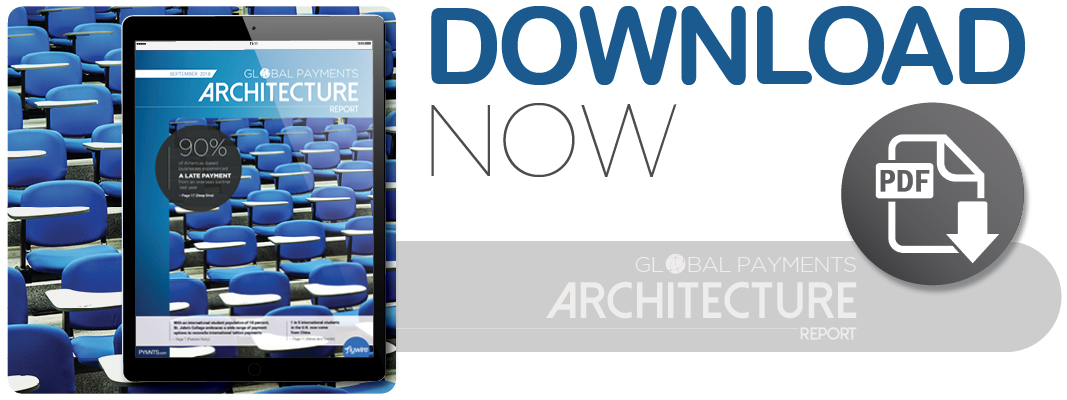How Global Receivables Platforms Could End The Payment Waiting Game

Receivables platforms, which can streamline B2B payment reconciliations, automatically match invoice data with bank account information and deposit payments directly into accounts, are seen as potential solutions to businesses’ issues with late and unreceived cross-border payments. The following Deep Dive examines how such platforms could be used to ease frictions in international education, healthcare and supply chain operations.
A recent survey found 75 percent of U.S. SMBs walked away from an international business opportunity due to non-payment anxieties. That same survey found 57 percent of respondents said their current strategies to ensure payments receipt limit their ability to expand across borders. Data on B2B invoice payments indicates these fears are founded, though, with 51.4 percent of businesses in the Americas — the U.S., Canada, Mexico and Brazil — having experienced foreign invoice non-payment. That figure is up slightly from the 50 percent noted in 2016.
Late payments are also plaguing cross-border businesses. An Atradius report found that a near-universal level, 90 percent, of businesses in the Americas had experienced a late payment from an overseas partner in the last year.
With such a significant payments share received late or not at all, receivables platforms are now gaining steam as a potential solution. They can be integrated into businesses’ operations to streamline the B2B payments reconciliation process, automatically match invoice data with a bank account and directly deposit remote payments.
Receivables platforms are also demonstrating the potential to solve common issues in certain industries. The following Deep Dive examines how they are being put to use in the healthcare, international education and supply chain industries.
Fixing The Global Supply Chain Weak Links
Global supply chain businesses are turning to receivables platforms such as Flywire to make the international payment process more transparent and efficient. A growing number of firms are using SCF (Supply Chain Finance) platforms to connect different transaction elements and ensure that payments and purchases are being delivered on time.
A supplier can use SCF to send invoices to the buyer for approval, for example, and the invoice data can be automatically uploaded to the platform. The supplier can then log in via a digital portal to see if, and when, its invoice was approved.
The SCF model appears to be playing a greater role across a wide range of industries, too. A recent survey found that the solutions are in place among consumer goods (21 percent of respondents), automotive (14 percent), communication and IT (14 percent), industrial manufacturing (11 percent) and transport and logistics firms (7 percent).
Cash flow is the most popular reason for implementing a SCF solution, according to the survey’s results. Forty-two percent of respondents who invested in them cited cash access as their most important driver, followed by suppliers’ liquidity needs (18 percent), building better supplier relationships (18 percent) and wanting to stabilize a supply chain (12 percent).
Teaching Students About International Tuition Payments
Products and supplies are hardly the only situations requiring smooth payments across borders, however. International students pursuing studies abroad can also be counted among those who need to ensure on-time payments delivered in the correct amounts.
The number of international students attending higher education institutions in the U.S. increased during the 2016 – 2017 academic year. This brought the total number to 1.07 million, a jump of more than 35,000 compared to the prior academic year.
Higher education institutions can encounter the same late payment issues experienced by many businesses, though. Many have policies to notify students and families if a tuition payment is late or when an account has gone into delinquency. These policies can include late fees of approximately $15, as well as negative impacts on students’ academic goals and families’ financial standing with the university.
As such, the influx of overseas students brings increased demand for payment solutions that ensure tuition payments are received and reconciled accordingly. Student-focused payment receivables platforms can be used to help students and their families manage tuition payments, loan collections and manage delinquent accounts. They can also automate payment schedules and deliveries, tailor payment plans based on students’ situations or offer more flexible payment schedules. Lastly, payment receivables solutions can reconcile overseas payments to ensure tuition bills issued in one currency are paid in full when the payee authorizes a transfer in his or her own local currency.
These solutions should help all parties in the international education arrangement — students, families and even colleges or universities — have an easier time remaining financially healthy.
Caring For Medical-Related Payments
Speaking of healthy, the medical care industry can also put receivables solutions to use to keep medical care providers financially sound.
Healthcare accounts for roughly 19 percent of the total U.S. gross domestic product (GDP). Related medical payments are often made using third-party payees, including Medicare, Medicaid or private insurance providers such as HMOs and PPOs.
A patient visiting a hospital or a clinic might incur a $1,000 bill for his or her treatment. This bill is then sent to a third-party payee. If one party enters a wrong code or if incorrect information is transmitted, however, a smaller share of funds might be transmitted. Such a problem could put the medical facility on shaky financial footing if it becomes more widespread.
The healthcare industry is also often beset by late payments and overdue bills. Roughly 16 percent of healthcare business assets are stalled in AR, by some reports. These problems can cause challenges across the broader industry, as patients frustrated with the billing process might avoid seeking medical care. Medical professionals can also be financially hurt by late or non-payments.
Receivable solutions could help avoid these situations by correctly reconciling patients’ treatments with their correct billing information. They can also be kept current on the latest healthcare regulations and changes, thereby ensuring that all billing requirements are also up to date.
Additional B2B Payment Tools
There are other B2B payment options businesses might want to consider. Virtual credit cards, for example, enable accounts payable professionals to issue single-use payment cards for specific expenses. These can be handled like a traditional invoice.
Self-service portals, meanwhile, offer all sides of a transaction access to a web-based platform to track and pay invoices, avoid losing invoices and streamline the payment process. Some companies, including Mastercard, have even launched a mobile-based payment app to make it easier for businesses to manage their payments.
As more companies enter the world stage, more patients seek medical care and more students travel to study abroad, receivables platforms and other B2B solutions will play a large role in ensuring business can continue to run smoothly.

